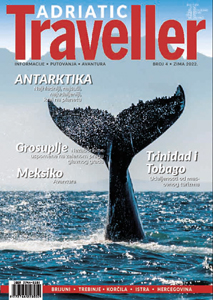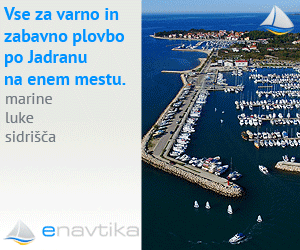
A Boat of Respectful Age
Photography Exhibition: A Boat of Respectful Age,
Mitja Zupančič
Hay tres clases de hombres,
los vivos, los muertos y
los que navegan.

As an old saying goes: there are three kinds of men: The living, the dead and those who sail the sea. Mitja belongs to this third kind when he catches motives with his camera and writes down impressions created under the sails while listening to music composed by Adriatic waves.
Because sea is the love of his life, he is a man of terra marique and he knows how to approach the maritime heritage of Paško Filipi and the sons of Korčula who were the ones to introduce »gajeta1« on the island of Murter. Mitja can feel the breeze by which »gajeta falkona2« is caught on the open sea, he makes friends with »krčki guc3 « and »rovinjska batana4 «. While studying three autochthonous Slovene vessels called čupa, ščifa and tonera, he has an opportunity to relive the thousand years old maritime history together with Slovene people from Križ5 near Trieste.
Because his soul belongs to sailing, he and his friends often sail to terra incognita somewhere around the islands of Vis, Svetac, Brusnik, Biševo and Palagruža.
Among other things Mitja Zupančič is also the author of the book Lighthouses on the Adriatic, a member of the World Lighthouse Society, a lecturer of the educational series Safety on Board, a journalist writing for the Slovene nautical magazine Navtika Plus, a director and a scriptwriter of seven documentaries Faces of the Adriatic, a publisher of maritime literature and a winner of the Croatian Top Journalist Award Golden Pen.
The fishing village of Komiža inspired him to start studying and researching the history of fishery, traditional vessels and customs. And when he draws a parallel between the oldest preserved document about a regatta on the old continent (Liber Comiciae, 1593) from Komiža to Palagruža and the beginnings of the sport sailing, which are nowadays reflected in technologically most sophisticated and humanly most demanding series Volvo Ocean Race, new horizons open up, things get real and comprehensible, contributions gain authenticity and persuasiveness.
Wood is eternal and the old boat is alive. It rises from the ashes and that’s where it returns. In-between the boat accompanies its master and lives with the family bearing its name ex genere in generem.
Old boats are like traditional Dalmatian music – a direct link to our predecessors who sang the way they lived and they lived the way they sang. A wooden boat keeps the memories fresh in its body and its soul.
Navigare necesse est!
1 A typical old wooden fishing boat from Dalmatia, Croatia.
2 A special type of »gajeta« which was built in Komiža on the island of Vis, Croatia.
3 A traditional wooden fishing boat from the island of Krk, Croatia
4 Another traditional wooden boat used for fishing from Rovinj, Croatia.
5 S. Croce in Italian

International Boat Show INTERNAUTICA is a member of the prestigious International Federation of Boat Show Organizers (IFBSO). IFBSO was founded in 1964 to help the development of boat shows and marine trade exhibitions worldwide. Today all member shows comply with the IFBSO Code of Excellence, ensuring that they meet the highest expectations of exhibitors and visitors. The IFBSO membership is open only to established, professionally organized events of international stature: whether for exhibitors or visitors. The IFBSO logo is a guarantee for a well-run, cost-effective boat show.
























